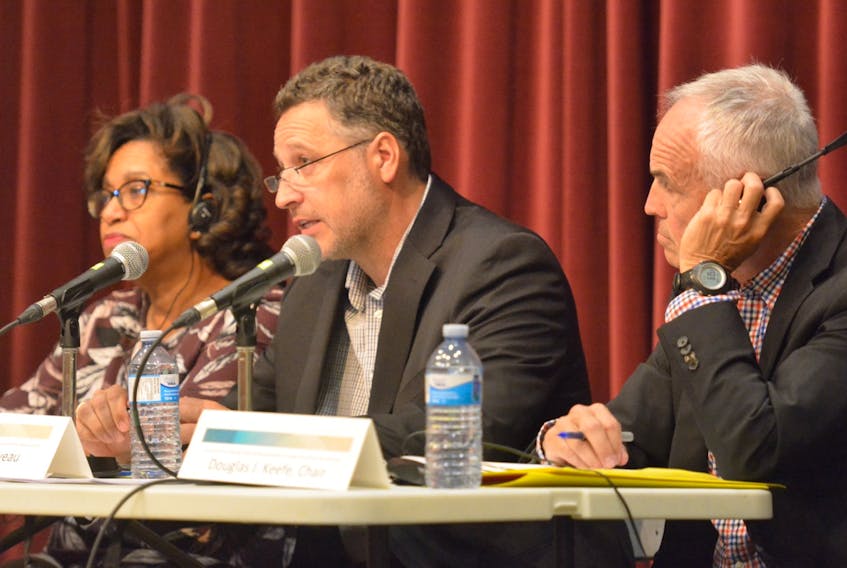A report on electoral representation for the province’s Acadian and African Nova Scotian populations says an electoral boundaries commission should be able to recommend exceptional ridings – or minority ridings, as they are perhaps better known – and it also says principles for setting electoral boundaries should be legislated.
The Commission on Effective Electoral Representation of Acadian and African Nova Scotians presented its report in Halifax on Thursday.
The commission was created in the spring of 2017 with the task of preparing a report “to inform the province on how best to achieve effective representation for all Acadian and African Nova Scotians, including in any future electoral boundary review.”
The commission was established after a Court of Appeal ruling – issued early last year – that said the process used by the former NDP government in 2012 to eliminate three Acadian ridings and an African Nova Scotian one was unconstitutional.
In its report, the three-member panel says it will be up to the provincial boundaries commission to determine what Nova Scotia’s provincial electoral boundary map should look like. The report does say, however, the next boundary review – to take place this year – should use as its basis the boundary map as it was in 2002, when the minority ridings were in place, rather than 2012, when the map was redrawn and those ridings (including the Acadian constituencies of Argyle and Clare) were combined with parts of adjacent ridings.
Doug Keefe, a member of the commission on effective electoral representation, cited the Court of Appeal’s ruling when explaining why they said the next boundary review should be based on the boundary map of 2002.
During a press conference after the release of his group’s report, Keefe said, “The exceptional ridings were a right that was removed (in 2012) without any consultation with those communities as a result of the select committee making a change literally overnight, and so what we’re saying is ... the 2002 boundaries should be foundational, so start there and look at what was there and give that weight ... We’re directing them back, to gaze back at 2002, that’s all.”
The report makes 29 recommendations, the first of which calls for the House of Assembly Act to be amended to include principles for setting electoral boundaries and that the commission reviewing boundaries should be required to adhere to those principles.
In Thursday’s press conference, Keefe said Nova Scotia is the only Canadian province or territory that doesn’t legislate the broad principles of boundary setting.
“Our principles can, and do, get changed every 10 years,” he said. “We think the fundamental principles should be beyond that. They should be in legislation.”
Those principles, the report says, should include a statement that voter parity is the primary factor, with a standard deviation of 25 per cent above or below the constituency average, but allowing for one or more exceptions to the standard deviation.
Asked for his reaction to the report, Argyle-Barrington MLA Chris d’Entremont said he was impressed, calling it a “good body of work.”
Among other things, he said he was pleased to see the panel recommending that the next boundaries commission base its review on the boundaries as they were back in 2002, given the political interference in the 2012 process that the court identified.









